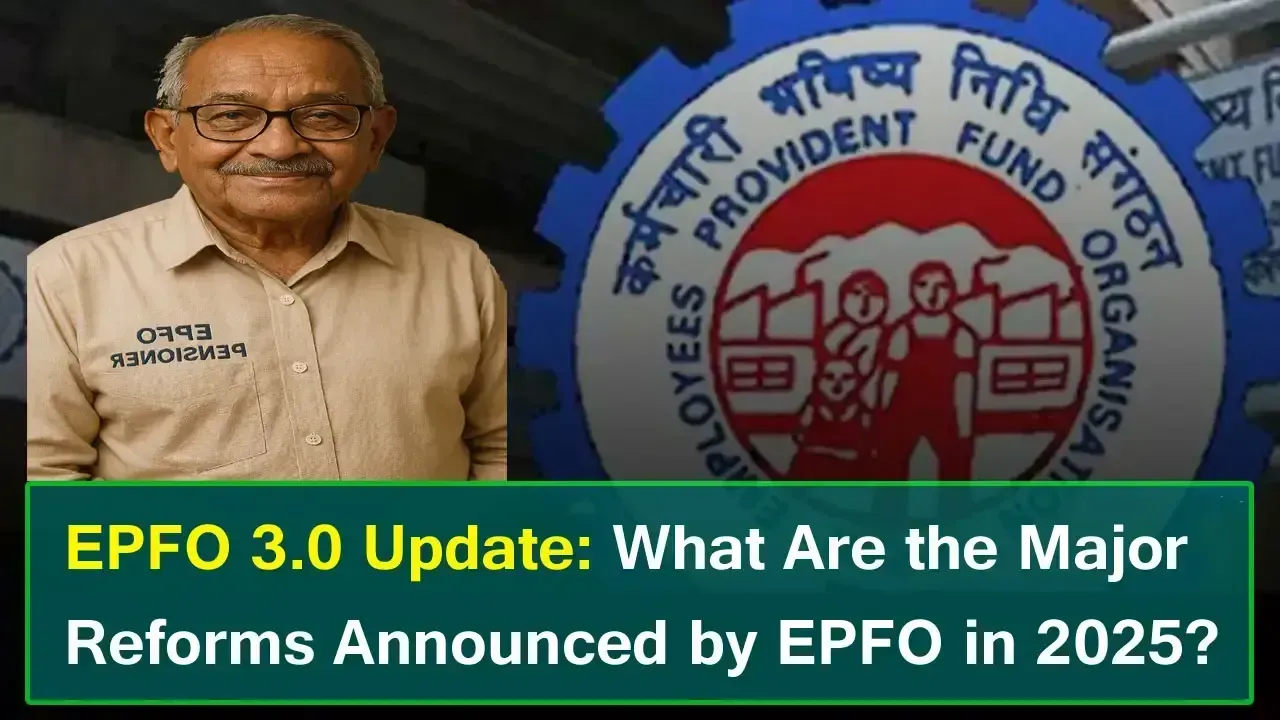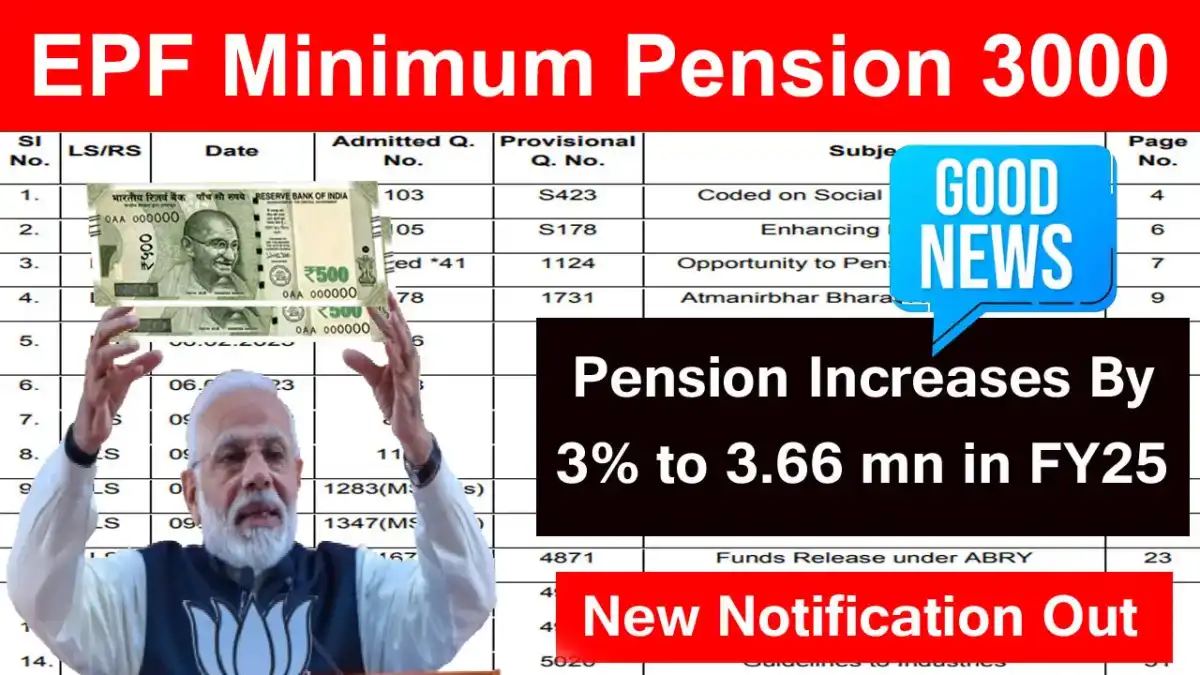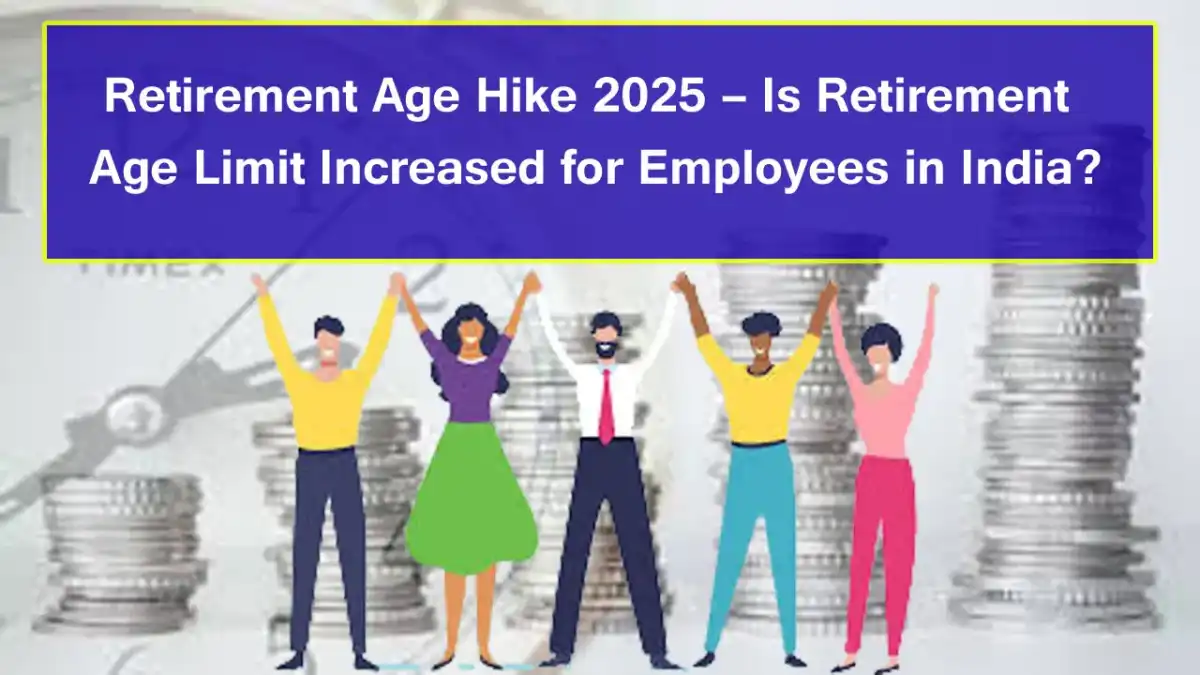[Fake or Real] EPFO Pension Hike 2025 News, ₹7,000 Minimum EPS Pension with DA
[Fake or Real] EPFO Pension Hike 2025 News, ₹7,000 Minimum EPS Pension with DA - Recently, news has been circulating across various online platforms claiming that the government has approved a significant hike in the minimum monthly pension under the Employees’ Pension Scheme (EPS), managed by the Employees’ Provident Fund Organisation (EPFO). As per these reports, pensioners will begin receiving a minimum pension of ₹7,000 per month starting in 2025—up from the current ₹1,000.
If true, this would mark the first pension revision in over a decade, benefiting more than 62 lakh retired employees across the country. The reported reform also mentions the introduction of Dearness Allowance (DA) for EPF pensioners—a feature that was previously unavailable. DA is proposed to be linked with inflation and will be revised periodically, mirroring the structure of pension systems already in place for central and state government retirees.
![[Fake or Real] EPFO Pension Hike 2025 News, ₹7,000 Minimum EPS Pension with DA](/upload/2025/April/epfo_pension_hike_news.webp)
Supporters of the alleged change highlight that the ₹1,000 monthly pension was grossly inadequate given the rising costs of living, especially for essentials like healthcare and utilities. If implemented, the hike and the addition of DA would offer considerable relief to pensioners, making the EPS more responsive to current economic realities.
However, as of now, no official notification or circular has been released by the EPFO or the Ministry of Labour confirming the ₹7,000 minimum pension. While the proposal has long been under discussion and there is strong demand for a pension revision, the reported updates appear to be speculative unless verified by a formal government announcement.
The claim about the ₹7,000 minimum EPS pension and DA inclusion should be treated with caution until officially confirmed. Pensioners and stakeholders are advised to await an authentic update from EPFO or the central government.
Why the Pension Hike Was Urgently Needed
The minimum pension under the Employees' Pension Scheme (EPS) had remained unchanged at ₹1,000 since 2014. Over the past decade, the cost of living has risen sharply, with essential commodities like food, electricity, and medicines becoming significantly more expensive. For many pensioners—especially those from low-income or unorganised sectors—surviving on this meagre amount became increasingly difficult.
In many cases, retirees were forced to depend on family members or even take loans to meet basic healthcare needs. Without any provision for Dearness Allowance (DA) or inflation-linked revisions, their financial hardship only worsened with time. Pensioners’ associations and labour unions repeatedly called for an increase, highlighting the widening gap between central government pensions and those provided by the EPFO.
This recent decision marks the culmination of sustained advocacy, legal battles, and public appeals. It reflects a growing acknowledgment that the earlier pension framework had become outdated and inadequate. Raising the minimum pension to ₹7,000 and introducing DA is a much-needed reform—one that aligns the EPS with the real-world needs of India's ageing population and moves it closer to being a dependable source of support.
Key Revisions in the 2025 Pension Policy
To understand the magnitude of the changes, it’s important to look at the major elements of the revised pension system:
| Feature | Before 2025 | After 2025 Implementation |
|---|---|---|
| Minimum Monthly Pension (EPS) | ₹1,000 | ₹7,000 |
| Dearness Allowance (DA) | Not Applicable | Included, inflation-linked |
| Number of Affected Pensioners | Approx. 6.2 million | Approx. 6.2 million |
| Inflation Adjustment | No | Yes, through DA |
| Last Major Pension Revision | 2014 | 2025 |
This table highlights the core transformation in pension entitlements, especially the shift from a flat rate to an inflation-adjusted benefit.
The Importance of Dearness Allowance for Retirees
Dearness Allowance (DA) plays a crucial role in helping retirees manage the rising cost of living. It is typically revised twice a year based on fluctuations in the Consumer Price Index (CPI). Until recently, the benefit of DA was extended only to government employees, leaving EPFO pensioners with stagnant pensions that gradually lost value due to inflation.
With the 2025 update, the government has taken a significant step by including DA provisions for EPFO pensioners. This move acknowledges the need to protect all retirees from the adverse effects of inflation. As a result, EPFO pensioners will now receive regular DA revisions in line with changing market conditions and living expenses.
This inclusion ensures that pensions are dynamic and responsive to the economic climate, rather than remaining fixed and inadequate over time. By aligning pension payments with real-world costs, the government is helping to safeguard the purchasing power of elderly citizens. Ultimately, this initiative is set to enhance the financial security and overall well-being of millions of retirees who depend on their monthly pension for essential needs such as food, healthcare, and transportation.
Broader Impact on Families, Communities, and the Economy
The recent pension increase is more than just a financial adjustment—it brings significant social and economic benefits. For many retirees, this pension serves as their sole source of income. With the monthly amount raised to ₹7,000 along with Dearness Allowance (DA), senior citizens can now afford improved healthcare, better nutrition, and more secure housing.
This enhanced financial independence reduces retirees' reliance on their children, extended families, or government aid. As a result, it eases pressure on both households and public welfare programs. Additionally, pensioners often spend their money within local communities—on groceries, medicines, utilities, and other essentials—which can stimulate economic activity, especially in small towns and rural areas.
In the long run, a stronger pension system promotes greater social stability. When people trust that retirement benefits are reliable and sufficient, confidence in social institutions grows, and workers gain a sense of security about their future.
Challenges That Need Attention Post-Implementation
While the reform is being welcomed widely, several challenges still need to be addressed to ensure its effective and inclusive implementation.
A significant number of pensioners reside in rural or remote areas where access to information and digital services is limited. Many are unaware of the process to claim revised pensions or update their personal details. Additionally, language barriers and low levels of digital literacy further hinder their ability to use government portals effectively.
In the past, pension disbursements have been delayed due to bureaucratic red tape and inaccuracies in records. To prevent similar issues going forward, it is crucial for EPFO to modernize its systems and strengthen local-level support.
To ensure that every eligible beneficiary receives their dues on time, measures such as widespread awareness campaigns, easily accessible helplines, pensioner assistance programs, and simplified procedures must be implemented. These efforts will help minimize confusion and ensure smoother implementation of the revised pension structure.
Voices from the Ground
Since the announcement, many retired workers and their families have expressed heartfelt gratitude. For them, the pension increase is more than just a financial boost—it’s a long-overdue acknowledgment of their lifelong dedication and contribution to the country’s economy.
“This change was much needed. With ₹7,000, I can now afford my medicines each month without constant worry,” said Rajeshwar Prasad, a 72-year-old retired textile worker from Bihar.
“At last, someone has thought of us. Earlier, my pension couldn’t even cover rent and groceries. Now, I feel a sense of relief,” shared Rekha Kumari, a widow and pensioner from Madhya Pradesh.
These personal testimonies echo a broader feeling of hope and appreciation, particularly among those from financially vulnerable backgrounds who often felt overlooked by previous policies.
Additional Highlights of the Reform
Here’s a summary of the major reforms that are set to transform the pension landscape in India:
- Minimum EPS Pension Increased: The minimum pension under the Employees’ Pension Scheme (EPS) has been raised significantly—from ₹1,000 to ₹7,000 per month.
- Dearness Allowance (DA) Introduced: EPF pensioners will now receive DA, which will help their pensions keep pace with inflation.
- Inflation-Linked Pension Updates: Pensions will be regularly revised based on the Consumer Price Index (CPI), ensuring better cost-of-living adjustments.
- Wider Impact: More than 6 million pensioners are expected to benefit directly from these reforms.
- Narrowing the Gap: The disparity between government pensions and EPFO pensions is being substantially reduced.
These reforms mark a significant shift in India’s approach to social security, offering greater dignity and financial stability to its retired citizens.
What More Can Be Done
The 2025 reform marks a significant milestone, but many experts argue that India’s pension ecosystem still requires deeper transformation. Future enhancements could include the integration of pension schemes with health insurance to offer retirees more comprehensive social security. Additionally, allowing workers to make voluntary contributions during their careers could lead to higher pension payouts post-retirement.
Creating a centralized, user-friendly pension portal—accessible in multiple regional languages—would greatly improve transparency and access. Furthermore, the government could explore linking pension benefits with broader social welfare programs, particularly to support vulnerable groups such as widows, persons with disabilities, and elderly individuals without family support.
| Suggested Reform | Potential Benefits |
|---|---|
| Voluntary top-up contributions | Higher pension for future retirees |
| Integration with health schemes | Financial relief for medical needs |
| Centralised pension dashboard | Easier access and tracking of benefits |
| Regional language support in pension portals | More inclusive communication |
These steps could further strengthen the social safety net for India’s ageing population.
Long-Awaited Transformation for Retirees
The much-anticipated EPFO Pension Hike 2025 is not just about a financial revision; it symbolizes a long-awaited recognition of the need for sustainable and dignified retirement support. With the minimum pension now set at ₹7,000 and the inclusion of Dearness Allowance (DA), the government has shown its commitment to enhancing the lives of millions of seniors who dedicated their lives to the workforce.
This reform promises to bring real and meaningful change to the daily lives of pensioners. It sets a new standard in India’s retirement policy framework, paving the way for a more inclusive and compassionate future for workers, even after they retire.
Fact Check: Is the EPFO Pension Hike 2025 Real?
Unfortunately, this news has been circulating as a hoax, often spread by smaller and less reliable sources. We urge our readers to always verify the authenticity of such news from trusted and official sources. Stay informed and avoid any unnecessary stress by relying on credible channels for accurate information.




